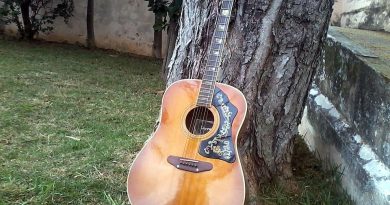Spice Up Your Chords: A Guide to Guitar Chord Embellishments
Spice Up Your Chords: A Guide to Guitar Chord Embellishments
As a guitarist, mastering chords is essential for playing a variety of songs and styles. However, simply strumming basic chords can sometimes lack excitement and creativity. That’s where chord embellishments come in. By adding embellishments to your chords, you can bring new life and dimension to your playing. In this guide, we will explore different ways to spice up your chords and take your guitar playing to the next level.
Understanding Chord Embellishments
Chord embellishments are additional notes or variations that are added to basic chords to create a more interesting and dynamic sound. These embellishments can range from simple extensions to complex alterations, depending on the level of creativity you want to bring to your playing. By incorporating chord embellishments into your playing, you can add texture, color, and emotion to your music.
Types of Chord Embellishments
1. Add9 and add11 Chords
One simple way to spice up your chords is to add the 9th or 11th note to basic chords. For example, instead of playing a regular G major chord (G-B-D), you can add the 9th note (A) to create a Gadd9 chord (G-B-D-A). This adds a new layer of sound and richness to the chord. Likewise, adding the 11th note (C) to a D major chord creates a Dadd11 chord (D-F#-A-C), providing a fresh and unique sound.
2. Sus2 and Sus4 Chords
Another way to embellish your chords is to use suspended chords, which replace the 3rd note of the chord with either the 2nd or 4th note. For example, a Csus2 chord (C-D-G) replaces the E note with D, while a Csus4 chord (C-F-G) replaces the E note with F. These suspended chords create an unresolved tension that can add a sense of anticipation and intrigue to your playing.
3. Chord Inversions
Chord inversions involve rearranging the order of the notes within a chord to create a different voicing. By playing the same chord with a different inversion, you can create a more interesting and unique sound. For example, instead of playing a C major chord (C-E-G) in the traditional root position, you can play it in first inversion (E-G-C) or second inversion (G-C-E) to add variation to your chord progressions.
4. Barre Chords and Power Chords
Barre chords and power chords are versatile tools that can be used to embellish basic chords. Barre chords involve using one finger to barre across multiple strings, allowing you to play chords in different positions on the fretboard. Power chords, on the other hand, are simple two-note chords that can be embellished with additional notes or variations to create a heavier and more intense sound.
5. Fingerpicking and Arpeggios
Fingerpicking and arpeggios are techniques that can be used to embellish chords and create intricate patterns and melodies. By picking individual notes within a chord or playing arpeggios, you can add depth and complexity to your playing. Experiment with different fingerpicking patterns and arpeggios to create your own unique chord embellishments.
Practice Tips for Chord Embellishments
1. Start with Basic Chords
Before diving into chord embellishments, make sure you have a solid understanding of basic chords and chord progressions. Practice transitioning between chords smoothly and accurately before adding embellishments.
2. Experiment with Different Techniques
Don’t be afraid to experiment with different chord embellishments and techniques. Try out different add9, add11, sus2, and sus4 chords, as well as chord inversions, barre chords, and power chords to see what works best for your playing style.
3. Listen to and Learn from Other Guitarists
Listen to recordings of your favorite guitarists and pay attention to how they use chord embellishments in their playing. Try to emulate their techniques and incorporate them into your own playing.
4. Practice Regularly
Like any aspect of guitar playing, mastering chord embellishments takes time and practice. Set aside dedicated practice time to work on incorporating embellishments into your playing and experiment with different combinations and variations.
In conclusion, chord embellishments are a great way to add creativity and excitement to your guitar playing. By exploring different types of chord embellishments and techniques, you can take your playing to the next level and create unique and dynamic sounds. Experiment with add9, add11, sus2, and sus4 chords, chord inversions, barre chords, power chords, fingerpicking, and arpeggios to find the ones that resonate with you. With practice and dedication, you can master chord embellishments and elevate your guitar playing to new heights.






